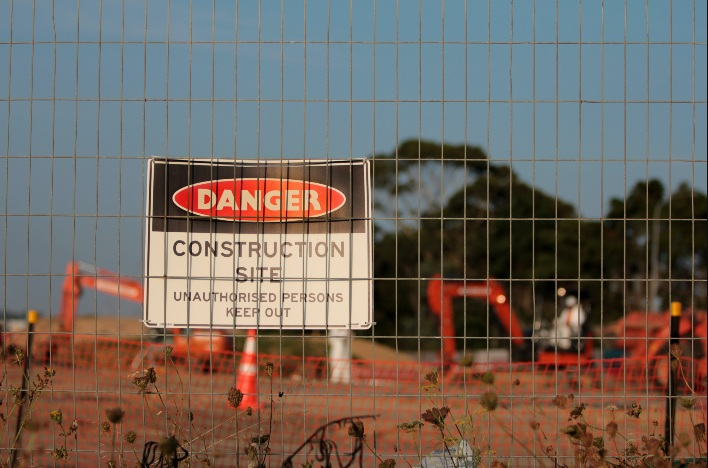A guide to the offence of Assault Occasioning Actual Bodily Harm- s47 of the Offences Against the Person Act 1861
This guide explains the offence of Assault Occasioning Actual Bodily Harm (ABH) under section 47 of the Offences Against the Person Act 1861. It covers the elements of the offence, examples of “actual bodily harm,” sentencing guidelines and possible defences for those accused.
On this page:
Elements of the offence
Assault Occasioning Actual Bodily Harm is often referred to as ‘assault ABH’ and is one of the most commonly prosecuted offences of violence. It is found in the statute books under s47 of the Offences Against the Person Act 1861.
Assault ABH occupies a midway position between the serious offence of assault occasioning grievous bodily harm and the lesser offence of Common Assault. Assault ABH is still considered a serious violent offence and potential disposals upon conviction can include imprisonment.
I have been defending Assault ABH offences for over 25 years and the below is designed to be a guide for the layperson as to the basics of the offence. I will include references to some Court of Appeal authorities for those interested in pursuing further reading. It is obviously not meant to be comprehensive legal advice and if you find yourself accused of this offence it is wise to seek legal assistance.
What counts as “actual bodily harm”?
Assault ABH is a criminal offence by virtue of section 47 of the Offences Against the Person Act 1861 which states:
“Whosoever shall be convicted on indictment of any assault occasioning actual bodily harm shall be liable to imprisonment for a term not exceeding five years.”
The offence encompasses both the assault and the harm it causes and is broken down into a number of ‘elements’, all of which the prosecution must prove beyond reasonable doubt.
The Elements of the Offence of Assault Occasioning Actual Bodily Harm
To prove an Assault ABH, the prosecution must establish to the requisite standard that:
An Assault or Battery Occurred
The starting point is a physical or threatened act of violence (an “assault”) or direct physical contact (a “battery”). Even where harm arises indirectly—such as a frightened reaction that leads to injury—the act can still satisfy the assault requirement (see the case of Roberts (1971)).
In the case of DPP v Santa-Bermudez [2003], the court confirmed that a defendant who creates a foreseeable risk of injury—e.g., denying having sharp objects that later injure a police officer—can be liable for ABH even without direct physical contact.
Actual Bodily Harm Was Caused
This relates to the level of injury. Bodily harm means injury that interferes with the victim’s health or comfort, and it must be more than ‘transient or trifling’ (see the case of Donovan [1934]). Injuries qualifying as ABH will depend on nature and degree but can include:
- Bruises and cuts
- Loss of consciousness (even briefly)
- Psychiatric injury (which will usually require expert evidence)
- Cutting off a substantial amount of hair (DPP v Smith [2006])
However, psychological effects like distress, fear, or anxiety do not count as ABH unless they result in a diagnosable psychiatric illness (see the cases of Chan-Fook [1994]; Ireland [1998]).
Causation
The assault must have “occasioned” the injury—i.e., it must have been caused by and be a natural and foreseeable result of the defendant’s actions. The courts have adopt a broad approach to causation, considering whether the victim’s reaction was reasonable (Roberts [1971]).
The Mental Element
Lawyers call the mental element of the offence that must be proved mens rea. Interestingly, the prosecution odes not always need to prove intention to cause harm. The required mental state is the same as for common assault—intention or recklessness as to causing unlawful force or fear. This is sometimes called "constructive liability" because the defendant is held liable for the unintended consequences of any assault (see the case of Savage [1992]).
Defences to ABH
There can be no definitive list of defences to an allegation of assault ABH and a qualified lawyer will be able to tell you what defences may be available in any given situation. Examples of defences that may be raised are:
Self-Defence
If the accused used reasonable force to protect themselves or others, this may be a complete defence. The force used must be proportionate to the threat.
Consent
Ordinarily, consent is not a defence to bodily harm. However, exceptions exist in certain activities (e.g., contact sports, medical treatment). Importantly, section 71 of the Domestic Abuse Act 2021 clarifies that consent is not a defence where harm was inflicted for sexual gratification—except in limited STI-related circumstances.
Lack of Intent or Recklessness
If the accused did not intend or foresee any force or fear, this could negate the mens rea for assault. However, if an assault is proved, it doesn't matter that the resulting harm was unintended or unforeseeable.
No Actual Harm Occurred
If the injuries are too minor to amount to actual bodily harm—e.g., fleeting discomfort—then a charge of ABH may not be sustained.
Identification
The prosecution must prove that the accused was responsible for the Assault and injury. In many cases, especially involving street fights and fights in public houses, there can be real doubt as to who the perpetrator was.
Sentencing guidelines for ABH
Assault ABH carries a maximum sentence of five years’ imprisonment on indictment. It is a specified offence for the purposes of extended sentencing under the Sentencing Act 2020. The Sentencing process is governed by Guidelines which are published by the Sentencing Council. This provides a structured approach to the process where harm is assessed by seriousness of injury and impact and culpability is assessed by factors like planning, vulnerability of the victim, and use of weapons.
Sentences may range from community orders to over two years in custody, depending on the category. In serious cases, sentences up to the five-year maximum may be imposed.
Aggravating Factors
These can increase the severity of the sentence:
- Attack in a domestic context
- Victim is a public worker or emergency responder
- Prior violence or abuse
- Use of a weapon or degrading conduct
Possible defences
Mitigating Factors
These may reduce the sentence:
- Remorse
- Mental health issues
- Lack of previous convictions
- Provocation or youth of the defendant
Outcome and reputational impact
Assault Occasioning Actual Bodily Harm is a serious criminal offence and any allegation should be taken seriously as upon conviction there can be significant consequences, including up to five years in prison in the worst case scenario. The offence sits in the middle of the scale between common assault and grievous bodily harm and covers a wide range of injuries. If you are facing a charge under section 47 of the Offences Against the Person Act 1861, it may be crucial to seek professional legal advice as early as possible in order to prepare a strong defence.
Getting legal help
If you require legal assistance in respect of an assault ABH care, whether the matter is at the pre-charge stage or if the matter has reached Court, Quentin Hunt can provide expert legal assistance to help you navigate the next steps. You may contact Quentin for a free, no obligation conversation about your case.
Frequently Asked Questions
What is the difference between assault ABH and assault GBH?
Assault ABH involves an infliction of a degree of harm that is not as serious as GBH, which means grievous, serious injury or wounding. Assault GBH is prosecuted under either sections 20 or 18 of the Offences Against the Person Act 1861, depending upon whether there was an intent that such harm was to be caused.
Can I go to prison for ABH?
Yes, it is possible to go to prison. The offence is triable either way meaning that it can be tried and sentenced in either the Magistrates or Crown Courts, and serious cases often result in custodial sentences.
What does "occasioning" mean in law?
‘Occasioning’ refers to the causative element of the offence, this means that the assault must have caused the injury. It will be asked as to whether the harm was a natural result of the defendant’s conduct.
Recommended for you
Quentin Hunt is known throughout the legal industry for his exceptional skill, fearless approach and honest, courteous attitude.
An award winning Barrister with over two decades’ specialist experience in criminal law.
Contact Quentin for advice in your case and get a second opinion.
Areas of Practice

General Criminal Law
Quentin’s proven track record as a barrister of skill, expertise and determination makes him the ideal choice to fight your corner and ensure that justice is done.

Fraud, Money Laundering & Serious Financial Crime
Quentin Hunt is widely respected amongst peers and clients for his expertise in fighting fraud, pharmaceutical and money laundering cases.

Health & Safety
Quentin specialises in cases where individuals, self-employed persons and companies are accused of breaches of the Health and Safety at Work Act.

Planning Enforcement
Planning enforcement barrister with a reputation for excellence and results, Quentin is ready to discuss any aspect of your case.

Road Traffic & Driving Offences
Quentin has a reputation as one of the UK's premier Road Traffic lawyers and is the go-to choice for celebrities who need legal advice to keep their driving licences.












